COLREGS
The "rules of the road" for sailors
Its no different on water than on land. There are rules of the road and not knowing them or following them can have real consequences. Many boaters ignore or never learn the ColRegs under the mistaken notion that it really doesn't matter. However, compliance with the ColRegs can have significant consequences in assigning liability for damages incurred in collisions
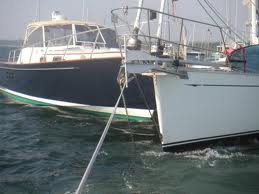
The ColRegs consist of 38 Rules grouped as follows:
- General rules (Rules 1-3)
- Steering and Sailing (Rules 4-19)
- Lights and Shapes (Rules 20-31)
- Sound and Light Signals (Rules 32-37)
- Exceptions (Rule 38)
plus Annexes
Click here for a copy of the ColRegs.
The United States Coast Guard has a comprehensive site called the Navigation Center where you can not only review the ColRegs but also practise them with a series of flash cards.
There is no 'right-of-way' in the ColRegs. Vessels are either 'stand-on'
or 'give-way' and each Master has a responsibility to do whatever they
can to avoid a collision (Rule 2). Here is a summary of each rule.
Please make sure that you read the actual rules as only they are the
authoritative text. Following the summary are several illustrations of
the Rules.
Summary of ColRegs Rules
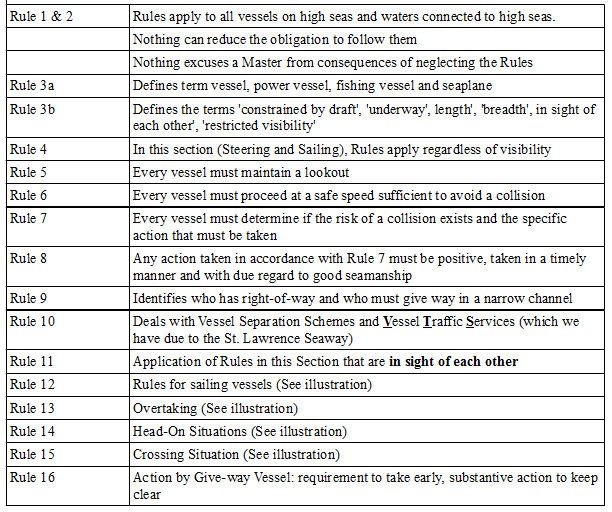
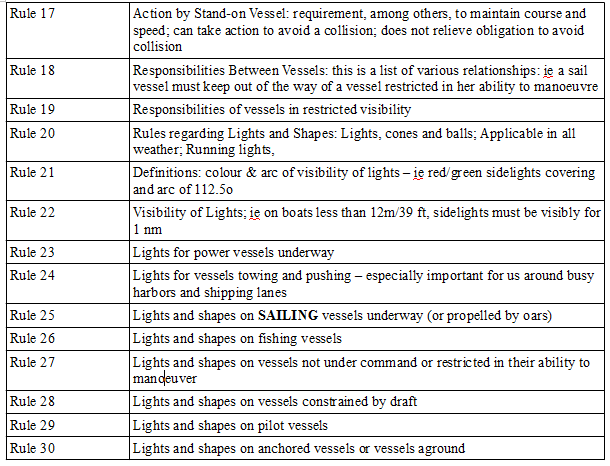
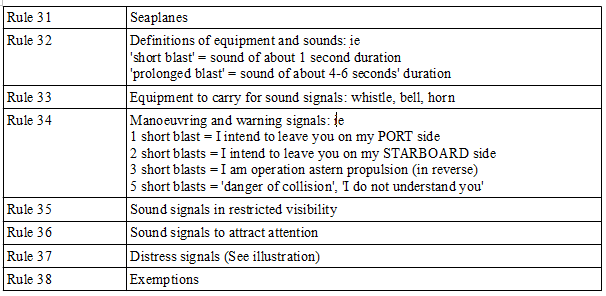
This is an illustration of the 'Rules of the Road' - Stand-On and Give-Way situations all boaters will face.
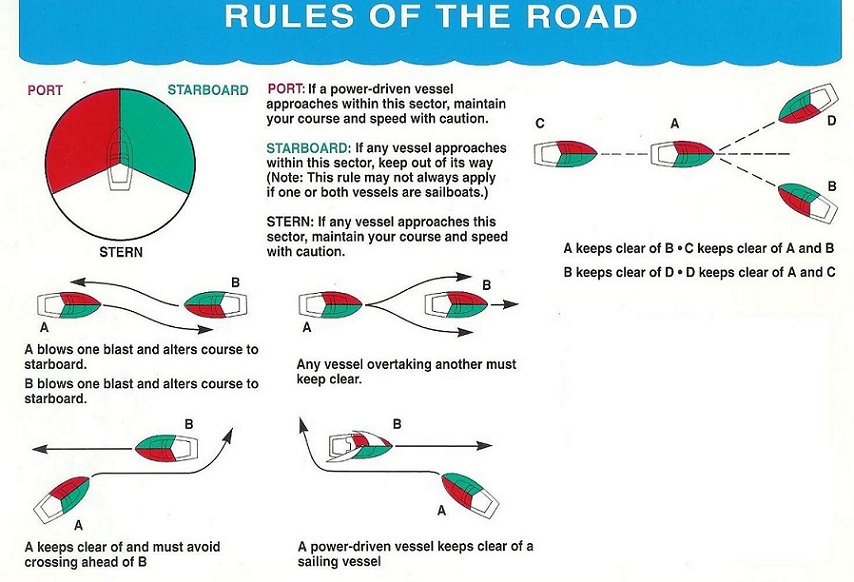
This is an illustration of Aids TO Navigation (ATONs). These are the 'traffic signs' of the waterways. This illustration includes standard daymarks that you will encounter.
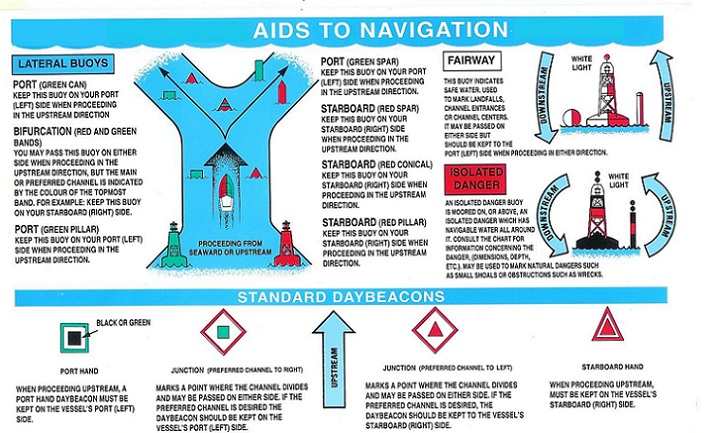
Cardinal Buoys take their name from the 4 cardinal directions – north, south, east and west and are used to direct vessels safely around a particular hazard or danger. Your direction of approach doesn't matter – which makes them different from lateral buoys.
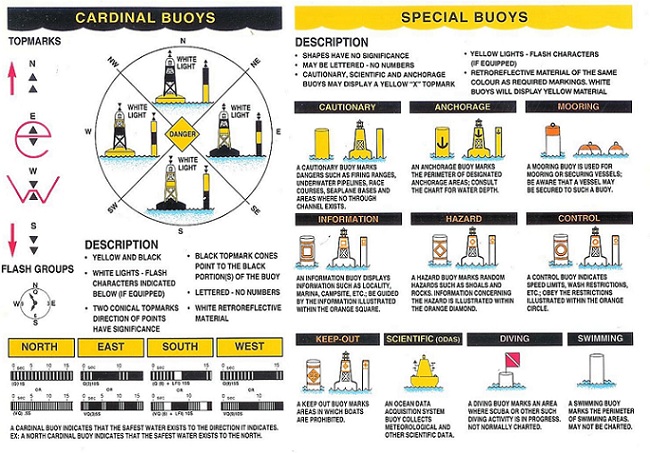
Distinctive light patterns are used at night to help sailors identify Aids to Navigation. These light patterns have 4 characteristics:
1) Color (red, green, white , or yellow)
2) Light display (sequence of flashes)
3) Period (time it takes to go through one sequence of flashes)
4. Equipped with reflective material on the Aid
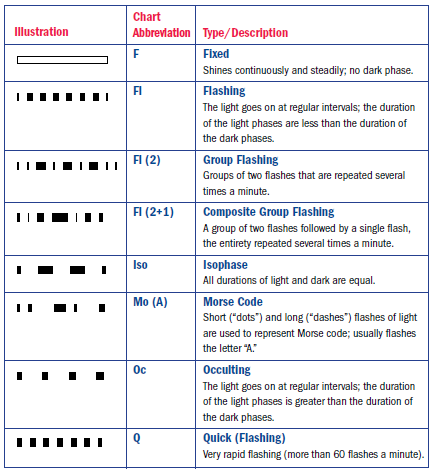
Rule 37 identifies Standard Marine Distress Signals. Knowing these could save your life.
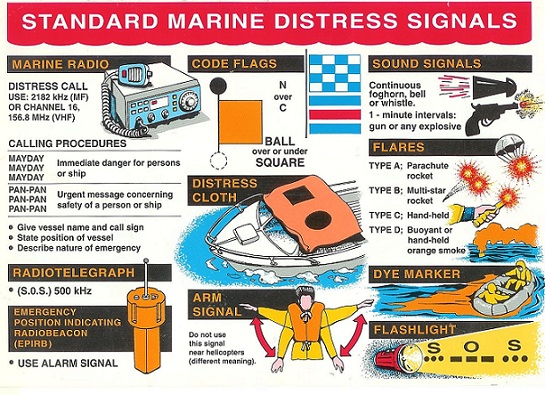
Click HERE to return to NAVIGATION
Click HERE to return HOME
Check out our great deals on high quality navigation tools from Weens & Plath and Davis Instruments
Name Brands Quality Products
Click the STORE button on the navigation bar
The Complete Log Book For Cruising Sailors
written by a sailor for sailors
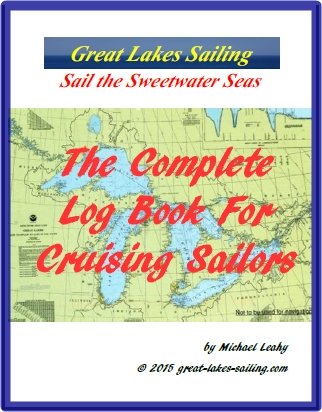
a practical, easy-to-use yet thorough format to record all of the necessary information about your boat and any cruises you take – whether exploring home waters or voyaging to distant ports across the Great Lakes.
.
Click here for more details